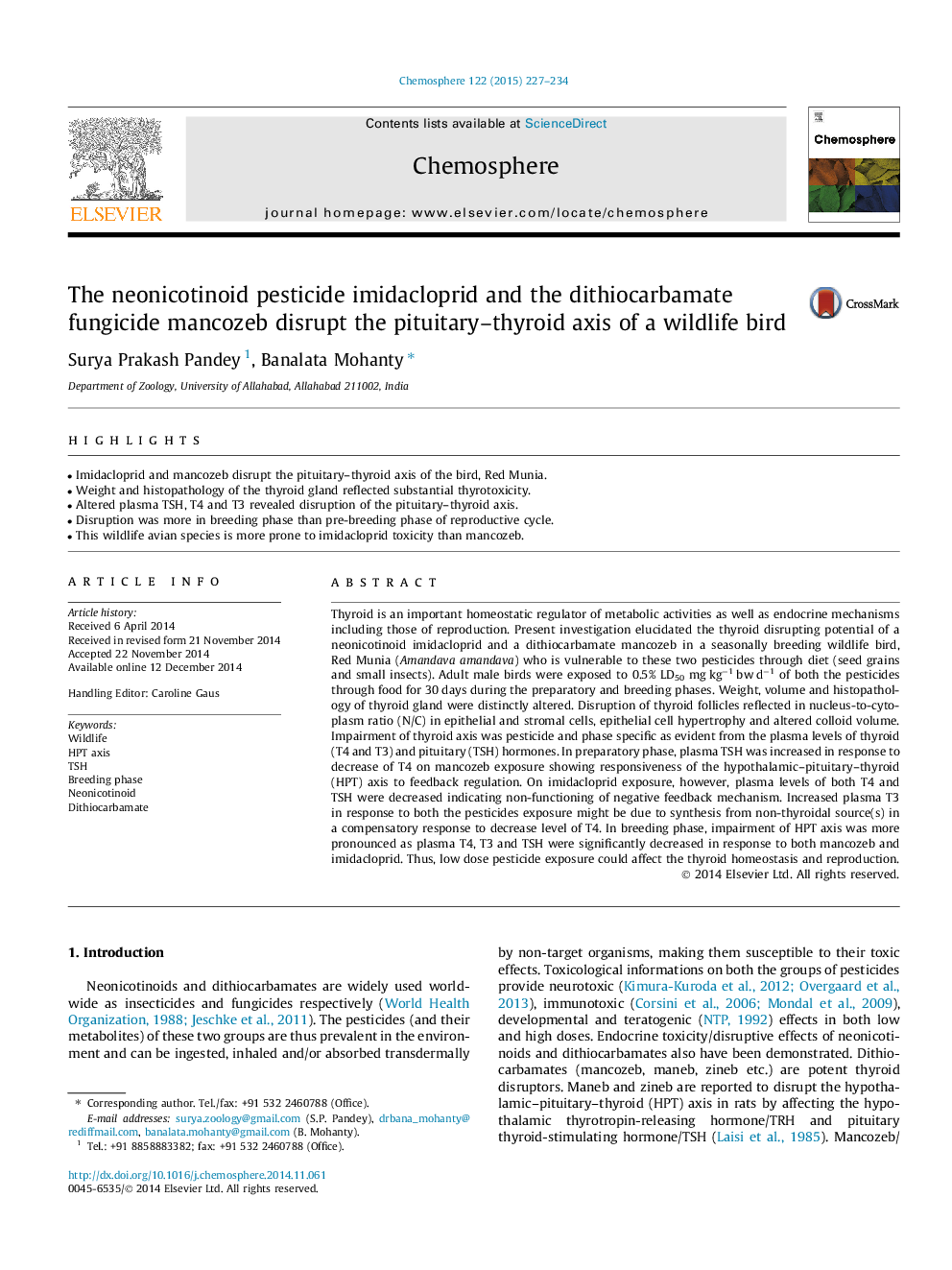| Article ID | Journal | Published Year | Pages | File Type |
|---|---|---|---|---|
| 4408397 | Chemosphere | 2015 | 8 Pages |
•Imidacloprid and mancozeb disrupt the pituitary–thyroid axis of the bird, Red Munia.•Weight and histopathology of the thyroid gland reflected substantial thyrotoxicity.•Altered plasma TSH, T4 and T3 revealed disruption of the pituitary–thyroid axis.•Disruption was more in breeding phase than pre-breeding phase of reproductive cycle.•This wildlife avian species is more prone to imidacloprid toxicity than mancozeb.
Thyroid is an important homeostatic regulator of metabolic activities as well as endocrine mechanisms including those of reproduction. Present investigation elucidated the thyroid disrupting potential of a neonicotinoid imidacloprid and a dithiocarbamate mancozeb in a seasonally breeding wildlife bird, Red Munia (Amandava amandava) who is vulnerable to these two pesticides through diet (seed grains and small insects). Adult male birds were exposed to 0.5% LD50 mg kg−1 bw d−1 of both the pesticides through food for 30 days during the preparatory and breeding phases. Weight, volume and histopathology of thyroid gland were distinctly altered. Disruption of thyroid follicles reflected in nucleus-to-cytoplasm ratio (N/C) in epithelial and stromal cells, epithelial cell hypertrophy and altered colloid volume. Impairment of thyroid axis was pesticide and phase specific as evident from the plasma levels of thyroid (T4 and T3) and pituitary (TSH) hormones. In preparatory phase, plasma TSH was increased in response to decrease of T4 on mancozeb exposure showing responsiveness of the hypothalamic–pituitary–thyroid (HPT) axis to feedback regulation. On imidacloprid exposure, however, plasma levels of both T4 and TSH were decreased indicating non-functioning of negative feedback mechanism. Increased plasma T3 in response to both the pesticides exposure might be due to synthesis from non-thyroidal source(s) in a compensatory response to decrease level of T4. In breeding phase, impairment of HPT axis was more pronounced as plasma T4, T3 and TSH were significantly decreased in response to both mancozeb and imidacloprid. Thus, low dose pesticide exposure could affect the thyroid homeostasis and reproduction.
